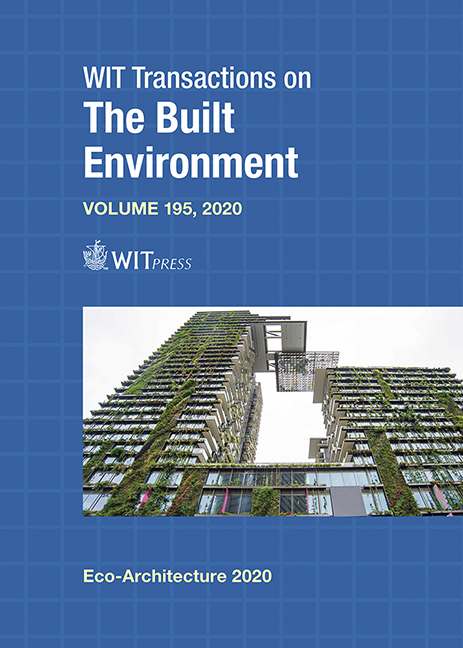PREDICTION OF THERMAL COMFORT AND ENERGY BEHAVIOUR THROUGH NATURAL-BASED SOLUTIONS IMPLEMENTATION: A CASE STUDY IN BADAJOZ, SPAIN
Price
Free (open access)
Transaction
Volume
195
Pages
11
Page Range
17 - 27
Published
2020
Paper DOI
10.2495/ARC200021
Copyright
WIT Press
Author(s)
GUADALUPE GÓMEZ, BORJA FRUTOS, CARMEN ALONSO, FERNANDO MARTÍN-CONSUEGRA, IGNACIO OTEIZA, MARTA M. CASTELLOTE, JESÚS MUÑOZ, SALUSTIANO TORRE, JOSE FERMOSO, TEBA TORRES, MIGUEL A. ANTÓN, TERESA BATISTA, NUNO MORAIS
Abstract
Climate change impacts particularly affect vulnerable populations such as children. Therefore, it is necessary to address the adaptation of educational buildings to prevent their negative impact on school performance and to increase their resilience. This study is part of an ongoing project, LIFE myBUILDINGisGREEN (LIFE17 CCA/ES/000088), which aims to optimise learning conditions in schools in southern Europe affected by heat waves during warmer months. This first part of the project focuses on predicting the impact of nature-based solutions (NBS) implementation. The main concern of this stage is to analyse the benefits on both interior comfort and energy efficiency. This paper presents the results of the influence on space cooling demand via dynamic building simulations after successively applying the different NBS. Further improvements in indoor environmental conditions such as CO2 concentration reductions will be evaluated later. For this purpose, a demonstration building, located in southern Spain, characterized in terms of thermophysical parameters of the envelope and air infiltrations was selected. The energy model was calibrated with actual monitoring data. Different scenarios have been analysed through an energy prediction software, leading to a wide range of outcomes in terms of improvements in both energy demand – assuming a cooling system – and temperature reduction.
Keywords
climate change, heatwaves, health, educational buildings, nature-based solutions, energy efficiency, indoor environmental quality, monitoring, dynamic simulations





